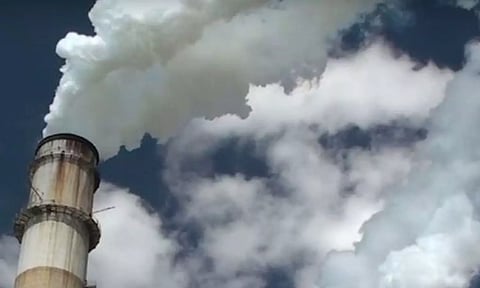

CHENNAI: If Tamil Nadu cities, including Chennai, continue to function as it's now without adopting mitigation measures (Business As Usual scenario), the amount of emission of Particulate Matter (PM) 2.5 will increase by around 30 per cent by 2030.
On the other hand, the cities can cut the emissions by 25 per cent if measures are adopted.
According to a study released by Center for Study of Science, Technology, and Policy (CSTEP), emissions inventory suggests a significant reduction in the non-attainment cities (under National Clean Air Programme) of Chennai, Madurai, Trichy, and Tuticorin.
"An emissions inventory is a database that lists, by source, the amount of air pollutants discharged into the atmosphere during a year or other time period. The emissions inventory has been prepared by CSTEP for 76 cities across 17 states and Union Territories of India," a release said.
Based on the emissions inventory developed for four non-attainment cities of Tamil Nadu, namely, Chennai, Madurai, Trichy, and Tuticorin, in 2019-20 Tuticorin was found to have the highest PM emissions, owing to the presence of heavy industries, including thermal power plants.
At the airshed level, Chennai’s emissions were almost double those of Tuticorin, given the presence of industrial areas just outside the city limits. In the case of the Business As Usual (BAU) scenario, by 2030, the emission in Chennai is projected to increase highest at 27 per cent, followed by 25 per cent in Trichy, 20 per cent in Madurai, and 16 per cent in Tuticorin.
If these four cities adopt all the recommended prioritised measures, the report estimates that by 2030 the emission will reduce by as much as 36 per cent in Trichy, 34 per cent in Madurai, 27 per cent in Chennai, and 20 per cent in Tuticorin.
Meanwhile, a report on the National Clean Air Programme released by the Central Pollution Control Board (CPCB) a few weeks ago said Chennai has witnessed an increase in the particulate matter in the air in 2022 when compared to 2019 which suggests air quality deterioration.
According to data, Chennai was the second least polluted city in the country after Vijayawada in 2019 in terms of PM2.5 levels. During the year, the average PM2.5 levels in the city was 28 microgram per cubic meter of air. In 2022, the city was relegated to third position in the criteria despite the same level of PM2.5 (28 micrograms per cubic meter).
In 2020 and 2021, the average PM2.5 levels were decreased to 25 and 27 micrograms per cubic metre respectively.
Similarly, the city has dropped two positions to third from the first position in the least polluted cities ranking in terms of PM10 levels.
In 2019, average daily PM10 levels in the city was 55 microgram per cubic metre. The same was dropped to 65 micrograms per cubic metre in 2022.
In 2020 and 2021, the PM10 level was 64 and 60 micrograms per cubic metre.